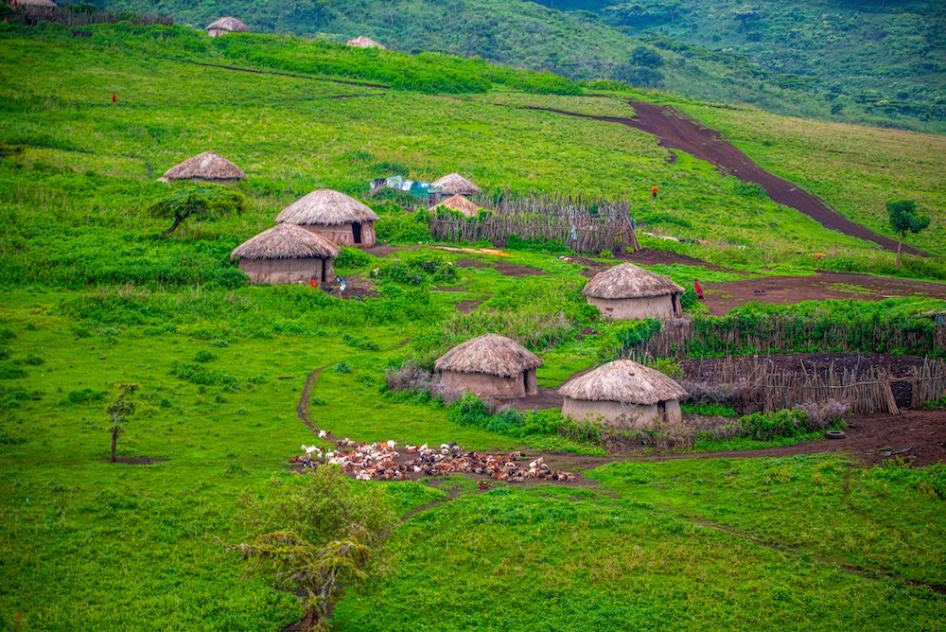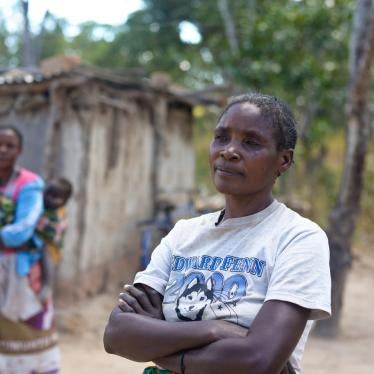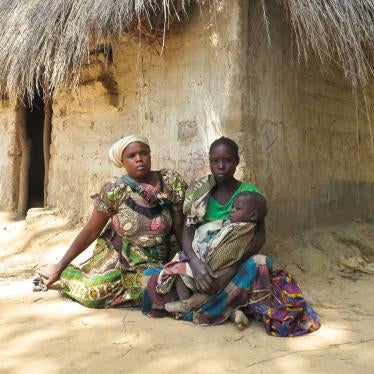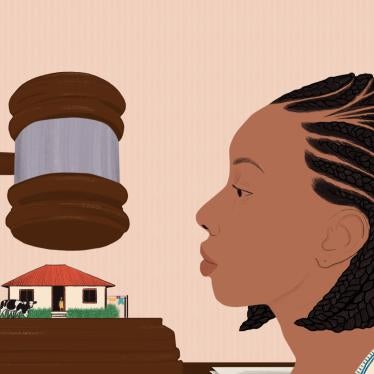Tanzania’s policies on conservation and its ongoing impacts on Maasai people in Ngorongoro district highlight how communities historically marginalized by oppression still wrestle with colonial policies. When colonial authorities declared the Serengeti area a national park in 1951, communities within its borders were relocated to Ngorongoro district for permanent settlement. But for the past half-century, these communities have continued to face numerous evictions even from these regions, while new regulations have curtailed their rights to graze cattle and cultivate subsistence gardens.
Currently, the government plans to displace about 150,000 pastoralists for its conservation initiatives in two areas in Ngorongoro district, Loliondo Game Controlled Area and Ngorongoro Conservation Area (NCA). In June 2022, security forces and Maasai violently clashed in Loliondo during a land demarcation exercise, which restricts the people’s access to grazing sites, water sources, and in some places cuts across their homes. The government had decided without consultation with affected communities to convert the area to a game reserve.
What happened in Loliondo in June is a continuation of the government’s forcible displacement of these communities. Loliondo is the tip of the iceberg, and Ngorongoro Conservation Area illustrates the government’s pervasive efforts to forcibly relocate Maasai people by reducing basic services and restricting movement into the area.
South of Loliondo, the Ngorongoro Conservation Area, a United Nations Educational, Scientific and Cultural Organization (UNESCO) World Heritage Site since 1979, spans vast areas of highland plains, savanna, savanna woodlands, forests, and includes the spectacular Ngorongoro Crater. It adjoins the Serengeti National Park and is part of the Serengeti-Mara ecosystem in functioning as wildlife corridors essential to protecting animal migrations. Colonial authorities established the conservation area in 1959 as a multiple land use area, with wildlife coexisting with Maasai traditional pastoralists. It is managed by the NCA Authority, supervised by the Natural Resources and Tourism Ministry.
Semi-nomadic Maasai pastoralists have lived, used, and managed the area alongside other native communities for over 200 years. They grow corn, beans, pumpkins, and sweet potatoes, and graze cows, sheep, and goats, requiring large areas of rangeland as pasture for their animals.
The Maasai strive to live harmoniously with wildlife and their customs, such as taboos on consuming wildlife meat instead of beef and cutting down a live tree instead of using its branches, and traditional rules on managing grazing areas, promote conservation of their natural resources. Their cultural and spiritual practices are interwoven with the land, with sacred areas for assemblies to teach young Maasai about their culture and how they live with the ecosystem around them.
The Ngorongoro Conservation Area’s most recent plan from 1996 has primary objectives to conserve natural resources, protect the interests of the Maasai pastoralists, and to promote tourism. However, since the creation of the conservation area, the Maasai population has increased through natural population growth, resulting in an increased need for land and resources. The government has used this to justify a new land-use model that expands the conservation area to include parts of Loliondo Game Controlled Areas, an adjacent park, and to relocate about 82,000 residents by 2027.
The government’s resettlement plan will forcibly displace people in these herder communities from Ngorongoro district, Arusha region, to Handeni district, Tanga region, about 600 kilometers away, with little or no consultation. Media have reported that up to 500 residents and 2,000 livestock have been moved to Msomera village in Handeni district since the relocation began on June 16, 2022.
Residents told us that the government downsized important health and education services beginning in February 2022. Services in these areas were already less developed than in other areas, with lower health and education outcomes than national figures. In February, the government grounded Flying Medical Services, a medical outreach service provider, and in October, announced that it would downgrade Endulen Hospital, the area’s main hospital, to a dispensary, reducing staff from 64 to 2. The government has also moved funding to schools to Handeni.
The government’s downsizing directly interferes with the communities’ ability to continue living in the area. It could have particularly devastating results in emergencies, including for pregnant women, and violates residents’ right to health and education.
UNESCO has pointed out that it did not recommend displacing the Maasai. Instead, a UNESCO committee recommended that “there is the need for an equitably governed consultative process to identify long term sustainable interdisciplinary solutions … with participation of all rightsholders and stakeholders, consistent with international norms.”
United Nations experts have also said the government should halt forced evictions and relocation. They urged the government to work with affected communities to evaluate challenges to conservation in the area, and design a plan that meets the needs of the local communities as well as conservation.
The displacement of Maasai in northern Tanzania needs to stop. The government should consult affected communities and ensure that they and their representatives have access to relevant information prior to consultation to obtain their free, prior, and informed consent, consistent with international standards, to any changes to conservation management plans.
Human Rights Watch’s written request to the government for further information did not get a response.










